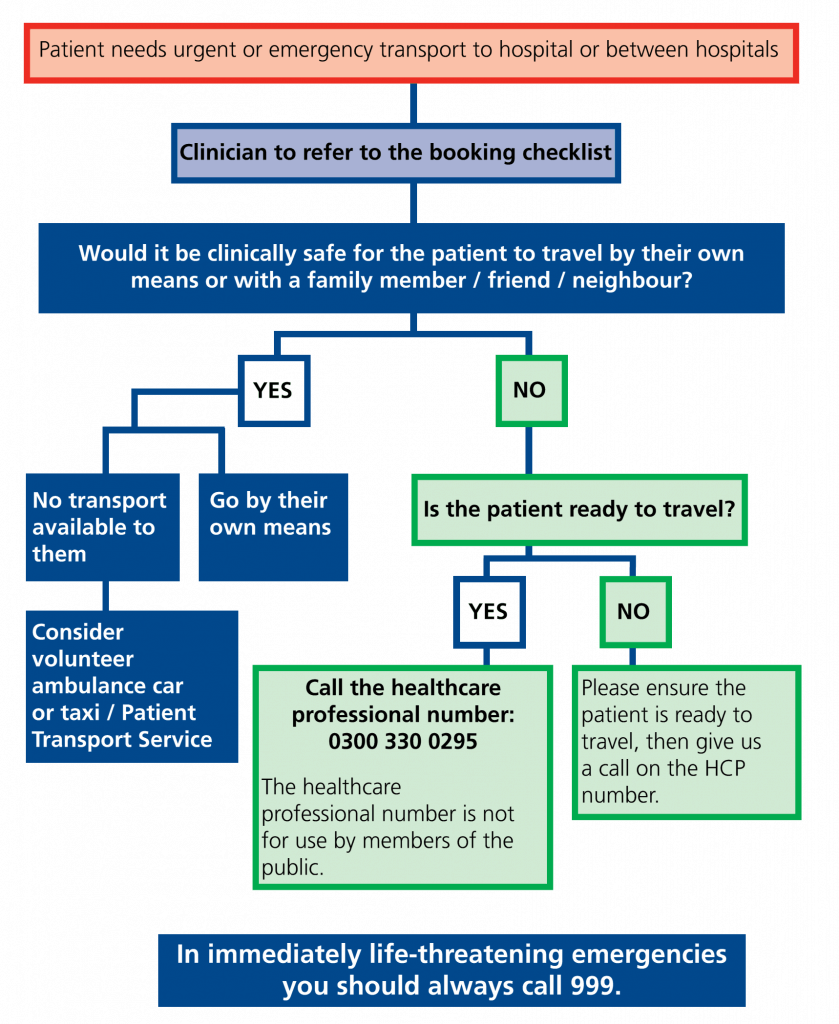ASHCROFT LEADS
- Doctor: Dr Sudhir Krishnan
- Nurse: –
- Admin: Chris Rushton
DATE REVIEWED:
6th June 2019
DATE OF NEXT REVIEW:
June 2020
2 things before you call the ambulance
This page describes all the different types of ambulance response options available so that you can make use of them effectively in the care of your patient. It also helps the rapid access priority ambulance service from being inappropriately used. This is in the best interests of all patients and our communities.
Before you admit a patient to hospital via ambulance:
- Work out their NEWS 2 score to help you detemine the urgency of the ambulance response.
- If you’re going to be asking a member of the admin team to call the ambulance – FIRST print off the “ambulance checklist” document above and fill it out and handover to the admin person.
- Remember – still use 999 for immediately life threatening emergencies.
- For all others, call 0300 330 0295
- Stay with the patient if it is immediately life-threatening. Ideally, the same for “life-threatening but not immediate” or get an appropriate person to help.
Do I send them via Ambulance or Car?

Types of Ambulance Responses
IMMEDIATELY LIFE THREATENING (LEVEL 1)
- PURPLE RESPONSE (≤7 MINS)
- PHONE 999
eg Cardiac arrest, Respiratory arrest, Unconscious, Analphylaxis, Suspected or Ruptured AAA, Obstetric emergency, Septic Shock, any cardiovascular collapse or airway compromise.
STAY WITH THE PATIENT.
LIFE THREATENING BUT NOT IMMEDIATE (LEVEL 2)
- AMBER RESPONSE (≤18 MINS)
- PHONE 0300 330 0295
eg Acute asthma/COPD, Acute FAST +ve stroke, suspected MI, Acute Coronary Syndrome, Meningitis, Red Flag Sepsis, Blocked catheter in severe pain, NEWS score ≥ 5, Acute abdomen, Acute Ischemic Limb, Acute pancratitis.
STAY WITH PATIENT
SERIOUS BUT NOT LIFE THREATENING (LEVEL 3)
- YELLOW RESPONSE (≤40 MINS)
- PHONE 0300 330 0295
eg Frail elderly rapidly deteriorating. Condition not immediately life threatening but requires urgent admission to hospital. Some mental health emergency admissions may be suitable for a level 3 response. Transport required within 2 hours max.
NON EMERGENCY BUT TODAY
- GREEN RESPONSE (1-4h: you need to specify 1, 2, 3 or 4h)
- PHONE 0300 330 0295
eg stable pneumonia, cellulitis needing iv abx, x-ray of acute minor injury, palliative care unit admissions. Bascally, all other patients who do not fit the above definitions and who require admission to hospital by ambulance vut do not need to managed as an emergency. Transport required within 4 hours max.
An immediate life-threatening response
Is for patients who require resuscitation or emergency intervention on scene from the ambulance service. It must never be used for any other reason such as a GP practice is closing or a HCP is unable to remain on scene. Where a life-threatening emergency response is requested the HCP must remain on scene with the patient until arrival of that
NEWS-2 Scoring for Adults (mandatory)
NEWS stands for National Early Warning Score. 6 simple physiological parameters form the basis of the scoring system. It helps you to work out the clinical risk of the patient deteriorating significantly.
- Temperature
- Pulse
- Blood Pressure (systolic)
- Respiratory Rate
- O2 Sats
- Consciousness Level – use A CVPU
- The A CVPU scale for level of consciousness = “alert”, “confused, voice, pain, unresponsive“
- By confused it means NEW confusion or confusion WORSE than baseline
- Work out the score for each parameter. Then add them up. Then Uplift the score by 2 for people needing oxygen. See interpretation below.


CONSIDER SEPSIS IN NEWS SCORE 5 or MORE
- Use SpO2 Scale 2 when there is confirmed previous or current hypercapnic respiratory failure (e.g. COPD)
- Use SpO2 Scale 1 in all other cases
- *RED score refers to an extreme variation in a single physiological parameter (ie a score of 3 on the NEWS chart, coloured RED to aid identification and represents an extreme variation in a single physiological parameter).
- The consensus of the NEWS Development and Implementation Group (NEWSDIG) was that extreme values in one physiological parameter (eg heart rate ≤40 beats per minute, or a respiratory rate of ≤8 per minute or a temperature of ≤35°C) could not be ignored and on its own required urgent clinical evaluation.
COPD patients:
For patients with known hypercapnoeic respiratory failure due to chronic obstructive pulmonary disease (COPD), recommended British Thoracic Society target saturations of 88–92% should be used. These patients will still ‘score’ if their oxygen saturations are below 92 unless the score is ‘reset’ by a competent clinical decision-maker and patient-specific target oxygen saturations are prescribed and documented on chart and in the clinical notes.
- Use SpO2 Scale 2 when there is confirmed previous or current hypercapnic respiratory failure
- Use SpO2 Scale 1 in all other cases
What about scoring for children? (PEWS - Paediatric Early Warning Score)
There are no national validated early warning scores for children and young people in England despite a large amount of clinical and academic work. The Royal College of Paediatrics and Child Heath (RCPCH) together with NHS England (NHSE) and NHS Improvement (NHSI) have come together to develop a national Paediatric Early Warning System (PEWS) for England. Single systems do exist and are in place in Scotland, Northern Ireland and in the Republic of Ireland. The aspiration is to move
England closer to a national early warning system for children,akin to adults, that is appropriate and safe.
So, watch this space. It will be coming soon.
